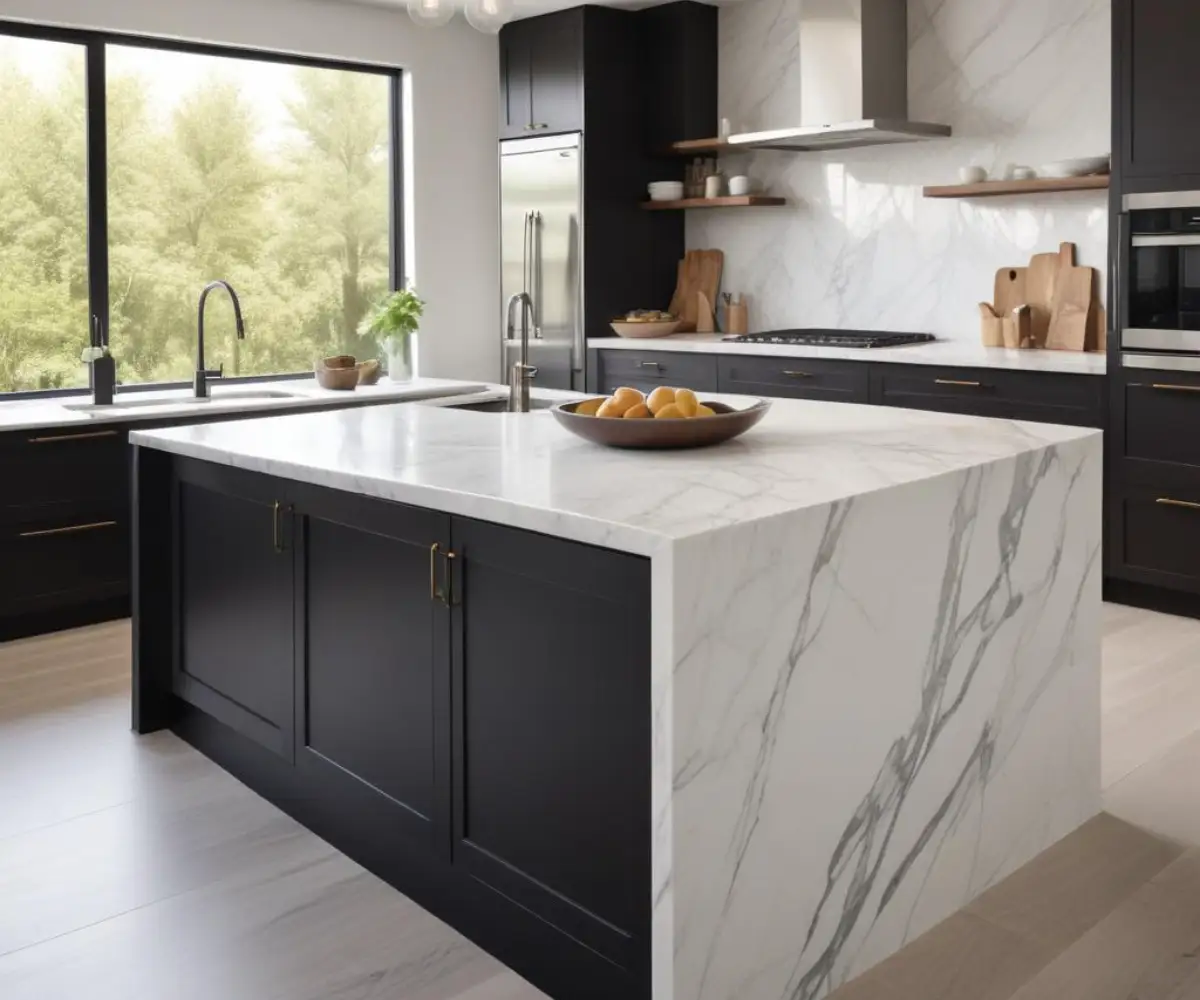10ft Kitchen Island: Don’t Build It Until You Read This Guide
The 10-foot kitchen island is the crown jewel of modern kitchen design. It promises endless counter space, a hub for social gatherings, and a grand statement of style. Yet, this coveted feature harbors a significant challenge: without meticulous planning, a 10-foot island can transform from a dream centerpiece into a costly, dysfunctional obstacle that disrupts the flow and efficiency of your entire kitchen.
Many homeowners, captivated by the aesthetic appeal, overlook the critical spatial and functional requirements. The result is often a cramped workspace, awkward traffic patterns, and unforeseen expenses. This guide confronts these problems head-on, providing the expert knowledge needed to ensure your grand vision becomes a practical and beautiful reality.
You'll Learn About
Is a 10ft Island Right for Your Space? The Non-Negotiable Rules
Before you commit to a 10-foot island, you must verify that your kitchen can physically accommodate it without sacrificing functionality. The most common mistake is underestimating the clearance space required around the island, leading to a kitchen that is difficult to navigate.
The National Kitchen & Bath Association (NKBA) provides essential guidelines for safety and efficiency. Work aisles, the spaces between the island and perimeter counters with appliances, should be at least 42 inches wide for a single cook and 48 inches for a multi-cook household. Walkways that don’t have appliances should have a minimum clearance of 36 inches. Anything less will create bottlenecks and make simple tasks like opening an oven or dishwasher door a challenge.
Measure, Then Measure Again
To visualize the island’s footprint, use painter’s tape to outline its dimensions on your kitchen floor. Be sure to account for the countertop overhang, which typically adds 1 to 1.5 inches on each side. Live with this taped-out space for a few days. Walk around it, pretend to open appliance doors, and carry laundry baskets through the pathways. This practical test is the best way to determine if the clearances feel comfortable for your family’s daily activities.
Function First: Designing an Island That Works as Hard as You Do
A beautiful island that doesn’t serve your needs is a failure in design. The primary purpose of your 10-foot island must be defined before any aesthetic choices are made. Is it primarily for food prep, a cooking station with a range, a cleaning hub with a sink, or a social zone for seating and entertaining? Answering this question will dictate every other decision.
A long island can disrupt the classic kitchen “work triangle” (the path between the sink, refrigerator, and stove). Instead, think in terms of “work zones.” A 10-foot island is large enough to be zoned for different tasks. Consider dedicating specific sections of the island to different activities: one end for chopping and prep, the center for a sink, and the opposite end for seating. This creates efficient mini-workstations and prevents the island from becoming a barrier to movement.
Appliances and Utilities
Integrating appliances like a microwave drawer, beverage fridge, or even a primary sink or cooktop can vastly increase your island’s utility. However, this requires careful planning for electrical wiring and plumbing before construction begins. Retrofitting these services later is disruptive and expensive. Ensure your design includes sufficient, conveniently placed outlets. Pop-up outlets are an excellent solution for maintaining a clean countertop line while providing power where you need it.
The Great Slab Debate: Conquering Countertop Seams and Material Choices
One of the biggest practical hurdles for a 10-foot island is the countertop material. A standard slab of natural stone like granite or marble, or even engineered quartz, is often shorter than 10 feet. This means your beautiful, expansive island will require a seam, a prospect that horrifies many homeowners.
The key to a seamless look is selecting a “jumbo” or “super jumbo” slab. Many quartz manufacturers offer these oversized options, which can exceed 130 inches in length, eliminating the need for seams on most 10-foot islands. While these slabs carry a premium price, the aesthetic result is often worth the investment. If a jumbo slab isn’t available or feasible, work with a skilled fabricator to strategically place and book-match the seam to make it as inconspicuous as possible.

Beyond the seam issue, material choice is critical. A kitchen island is a high-traffic, high-impact surface. You need a material that is durable, resistant to stains, and aligns with your maintenance tolerance.
Countertop Material Comparison for a 10ft Island
| Material | Typical Max Length | Seam Likely? | Durability | Maintenance | Average Cost (per sq. ft.) |
|---|---|---|---|---|---|
| Quartz (Jumbo) | 128″ – 136″ | No | Very High | Low (non-porous) | $70 – $150 |
| Granite | 105″ – 120″ | Yes | High | Moderate (needs sealing) | $50 – $130 |
| Marble | 80″ – 110″ | Yes | Low (scratches/etches easily) | High (needs frequent sealing) | $60 – $200 |
| Butcher Block | Up to 145″ | No | Moderate (dents easily) | High (regular oiling) | $40 – $100 |
| Stainless Steel | Up to 144″ | No | High (can scratch) | Low | $80 – $220 |
Power, Light, and Air: The Technical Details You Can’t Ignore
The technical infrastructure for your island is just as important as its physical structure. A failure to plan for electrical, lighting, and ventilation needs will severely limit the island’s functionality and can be a significant source of regret.
Proper lighting is crucial over a large surface. A common rule of thumb for a 10-foot island is to use either two large pendants or three medium-sized pendants. Space the lights evenly, ensuring the entire work surface is well-illuminated without creating harsh shadows. Supplement pendant lighting with recessed can lights in the ceiling for balanced, ambient light throughout the kitchen.
If your island includes a cooktop, ventilation is not optional—it’s essential for air quality and safety. An overhead range hood is the most effective option but can visually dominate the space. A downdraft ventilation system, which retracts into the island when not in use, offers a more streamlined look but is generally less powerful at capturing smoke and steam.
Storage Wars: Maximizing Every Inch of Your 10ft Island
A 10-foot island offers a massive opportunity for storage, but it must be designed with intention. Simply installing a row of standard cabinets is a missed opportunity. Opt for deep drawers instead of lower cabinets wherever possible. Drawers provide easier access to the entire space, preventing items from getting lost in the back.
Tailor the storage to the island’s function. If one end is a baking prep zone, include drawers for rolling pins and mixing bowls, and vertical slots for baking sheets. If you have a sink, a pull-out trash and recycling center is a must-have. The structural assembly of such a large piece requires robust hardware; understanding material strength, like knowing what grade shear bolts are, highlights the importance of using quality components for a structure this large.
Budgeting for Your Behemoth: What Does a 10ft Island *Really* Cost?
The cost of a 10-foot kitchen island can vary dramatically, from a few thousand dollars to well over $20,000. The final price tag is influenced by your choice of cabinets (stock, semi-custom, or custom), countertop material, appliances, and labor costs for installation, plumbing, and electrical work. It is crucial to get detailed quotes that break down each of these components to avoid surprises.
A realistic budget for a well-appointed, custom 10-foot island often falls in the $7,000 to $15,000 range. This typically includes semi-custom cabinets, a quartz or granite countertop, installation, and basic electrical and plumbing hookups for a sink or dishwasher. High-end materials, premium appliances, and complex designs will push the cost higher.
Seating Smarts: Comfort Without the Cramp
If your island is meant for seating, comfort is paramount. For counter-height seating (36 inches), you need a minimum countertop overhang of 15 inches to provide adequate knee space. For bar-height seating (42 inches), a 12-inch overhang is sufficient. To determine how many stools can fit, allow for 24 inches of width per person. This ensures guests aren’t bumping elbows. For a 120-inch island, you can comfortably fit five stools.
Ensuring your island’s paint finish is flawless is also crucial; issues like a primer that won’t cover a stain can ruin the final look and detract from the overall investment. Similarly, the choice of materials for the island base is important for longevity, much like how one would differentiate between fence boards vs deck boards for an outdoor project based on durability and treatment.
Conclusion: Your Blueprint for the Perfect Island
A 10-foot kitchen island can be a transformative addition to your home, offering unmatched functionality and becoming the heart of your daily life. However, its success hinges entirely on thoughtful, detailed planning. By prioritizing proper clearances, defining its core function, carefully selecting materials, and planning for technical requirements, you can avoid common pitfalls.
Approach this major investment with knowledge and foresight. By doing so, you will create a stunning centerpiece that is not only beautiful but also works intelligently, enhancing your kitchen and your home for years to come.

